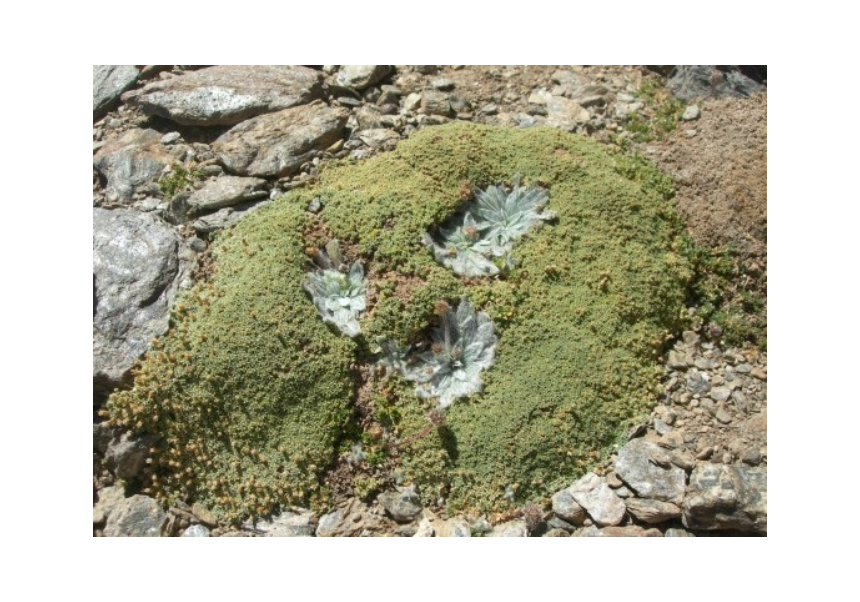
Plants that facilitate the survival and reproduction of other species can also make them evolve, something that has been ignored in most studies on the subject.
CSIC researchers, together with scientists from Mexico and Switzerland, establish a guide to study the evolutionary changes of plants that benefit from other plants.
A study published in the journal Trends in Plant Science establishes the method needed to measure the evolution of plant traits that benefit from facilitation. This methodology allows integrating this interaction between plants together with other ecological interactions such as pollination or seed dispersal, which are key components of biodiversity. The study is led by the Desertification Research Center (CIDE), a joint center of the Spanish National Research Council (CSIC), the University of Valencia (UV) and the Generalitat Valenciana, in collaboration with researchers from the Experimental Station of Arid Zones (EEZA-CSIC), the National Autonomous University of Mexico and the Institute of Agricultural Sciences (Switzerland).
In natural ecosystems, species sharing the same habitat can interact positively (by displaying behaviors such as facilitation or mutualism), or negatively (through competition, predation or parasitism). These interactions largely determine the structure and functioning of the ecosystem, marking not only the present conditions, but also determining the evolutionary changes of the connected species in the past and the future.
Evolutionary studies have traditionally emphasized negative interactions as a driver of natural selection, the mechanism by which adaptive change in species characteristics (phenotype) occurs. Now, an international group of researchers led by scientists from CIDE (CSIC-UV-GVA) has provided empirical evidence of positive interactions offered by nature, establishing a method to study the traits of species that evolve as a consequence of this type of relationships.
The study focuses on an interaction known as ‘facilitation’ between plants, in which some species called ‘nurse’, which have adaptations that allow them to establish in stressful environments, modify their immediate physical environment allowing the establishment of other species less adapted to this type of environment, called ‘beneficiaries’. Nurse plants ‘benefit’ their associated plants by building favorable niches, accumulating nutrients, providing shade or protecting them from herbivores.
Facilitation as an 'evolutionary engine
“Although in ecological theory facilitation has long been contemplated as a selective force, this question has hardly been addressed at the experimental level because most studies have estimated the effects of plants that favor the fitness of other plants without considering the traits that mediate the interaction, an approach that lacks crucial information from an evolutionary point of view,” explains Miguel Verdú, the CIDE researcher who led the study.
“In this study we propose a conceptual framework that allows us to understand how facilitation acts as an evolutionary engine, as well as to discern which mechanisms enable nurse plants to become selective agents of traits of beneficiary plants,” adds researcher José Mª Gómez Reyes, from the Experimental Station of Arid Zones (EEZA-CSIC).
A guide to studying evolution by facilitation between plants
"Evidence that facilitation exerts selective pressure on beneficiary plants requires demonstrating that the relationship between the phenotypic trait and the fitness of the beneficiary plant is modified in the presence of the benefactor species. An illustrative example would be the case of evolution towards large seeds when they germinate better than small ones under a nurse plant but not when they are outside it", exemplifies Miguel Verdú.
Since nurse plants can select beneficiary traits by increasing the probability of interaction and the fitness of the beneficiary once the interaction has occurred, it is important to elucidate the weight of both components. The conceptual and methodological framework presented in the published study addresses these questions. The importance of this model lies in the possibility of measuring the strength with which nurse plants can drive the evolution of traits of their beneficiary plants, serving as a ‘guide’ to study changes.
Reference:
Facilitation and plant phenotypic evolution. M. Verdú, J.M. Gómez, A. Valiente-Banuet and C. Schöb. 2021. Trends in Plant Science. Published:June 07, 2021.
https://www.cell.com/trends/plant-science/fulltext/S1360-1385(21)00096-0
DOI:https://doi.org/10.1016/j.tplants.2021.04.005
CIDE Communication









